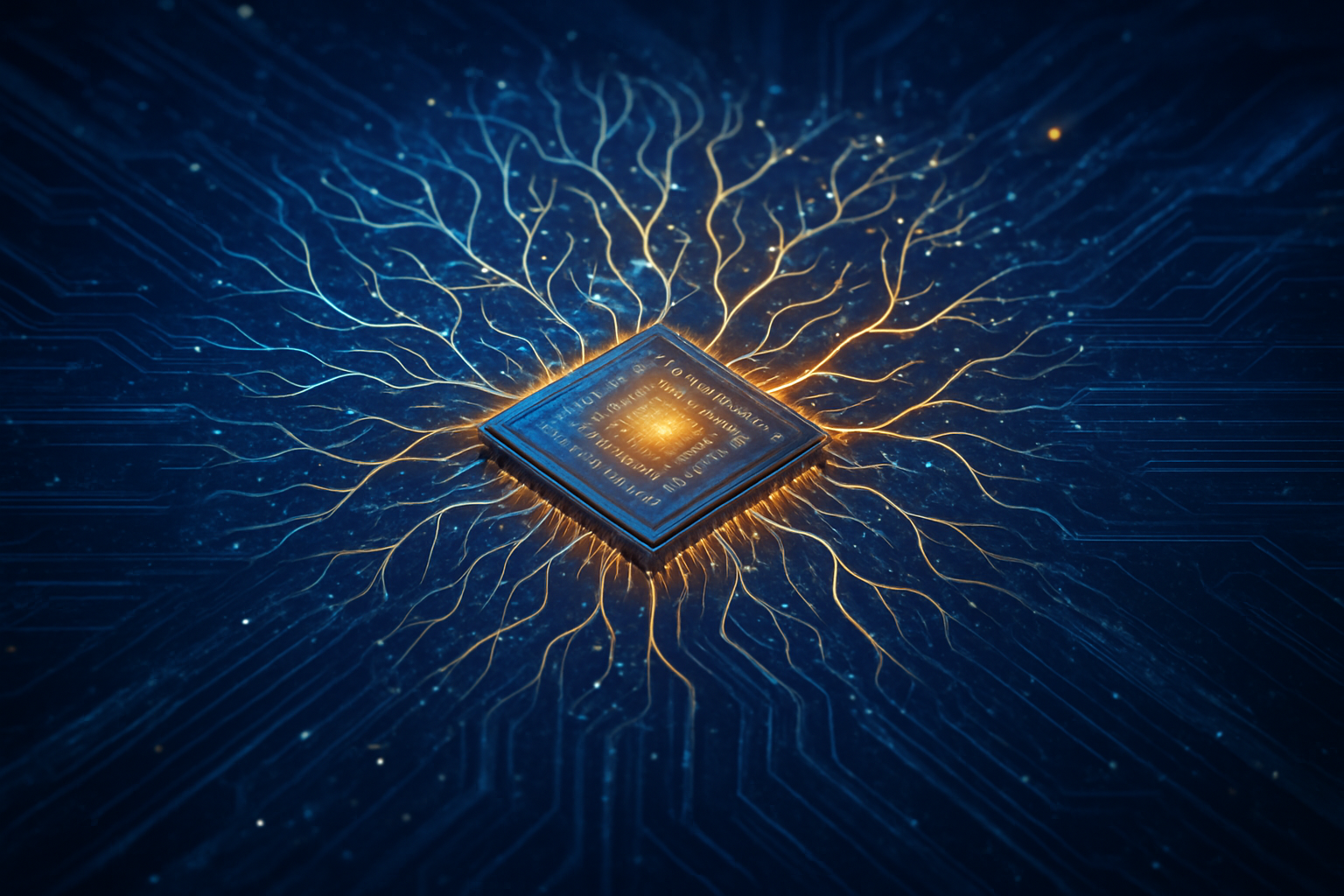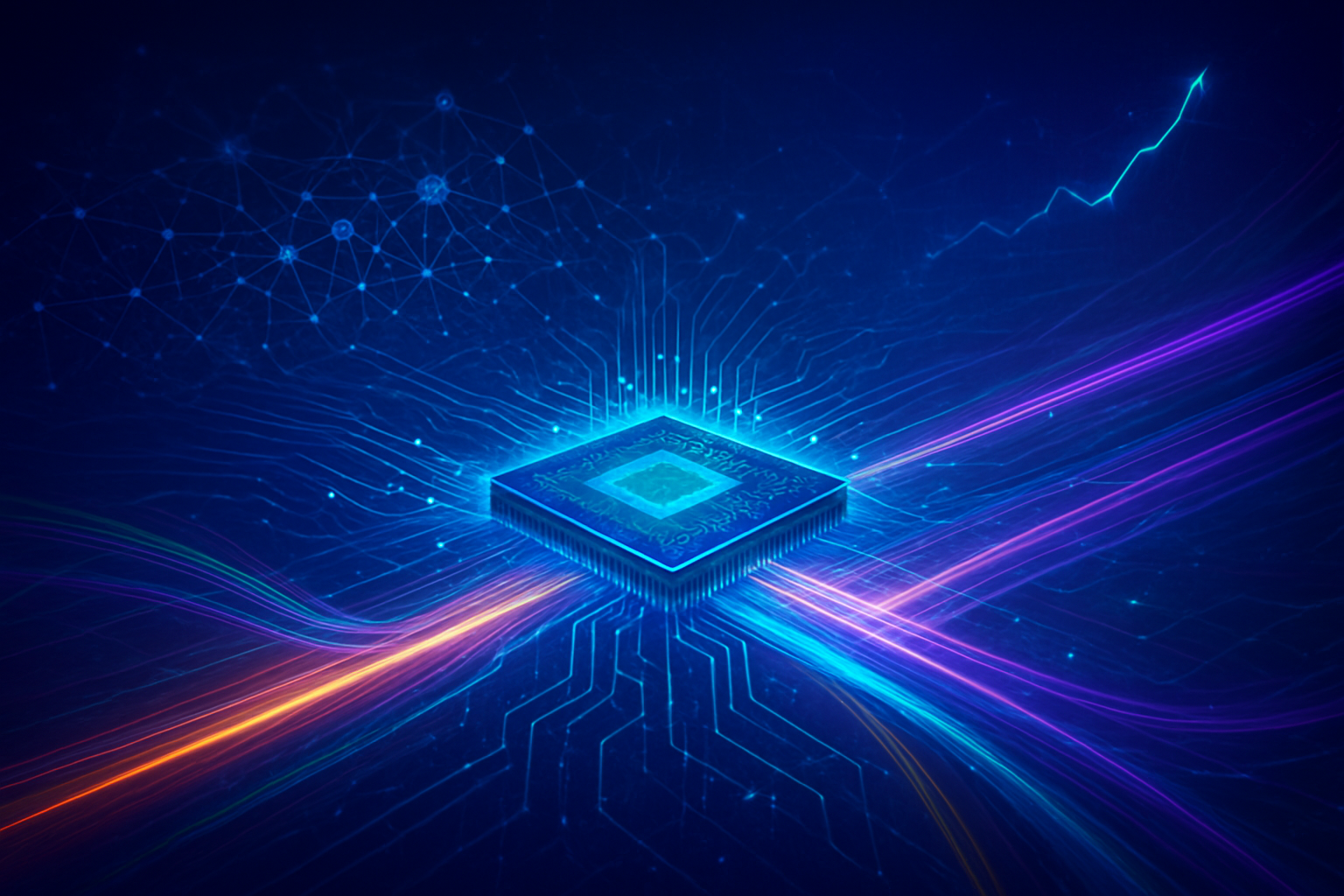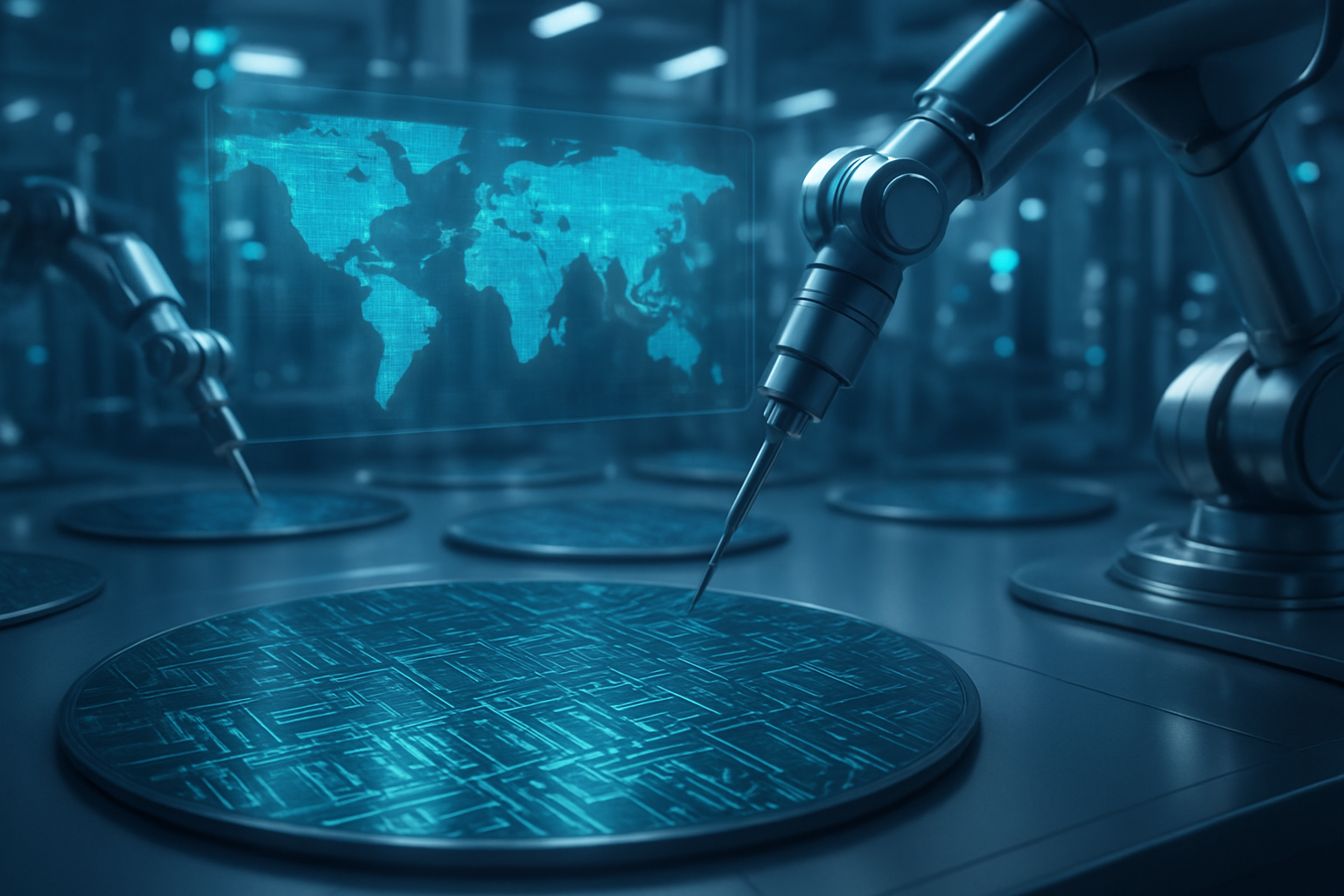A groundbreaking quantum-enhanced semiconductor metrology platform, Qu-MRI™ developed by EuQlid, is poised to revolutionize the landscape of advanced electronic device research, development, and manufacturing. This innovative technology offers an unprecedented 3D visualization of electrical currents within chips and batteries, addressing a critical gap in existing metrology tools. Its immediate significance lies in providing a non-invasive, high-resolution method to understand sub-surface electrical activity, which is crucial for accelerating product development, improving yields, and enhancing diagnostic capabilities in the increasingly complex world of 3D semiconductor architectures.
Unveiling the Invisible: A Technical Deep Dive into Quantum Metrology
The Qu-MRI™ platform leverages the power of quantum magnetometry, with its core technology centered on synthetic diamonds embedded with nitrogen-vacancy (NV) centers. These NV centers act as exceptionally sensitive quantum sensors, capable of detecting the minute magnetic fields generated by electrical currents flowing within a device. The system then translates these intricate sensory readings into detailed, visual magnetic field maps, offering a clear and comprehensive picture of current distribution and flow in three dimensions. This capability is a game-changer for understanding the complex interplay of currents in modern chips.
What sets Qu-MRI™ apart from conventional inspection methods is its non-contact, non-destructive, and high-throughput approach to imaging internal current flows. Traditional methods often require destructive analysis or provide limited sub-surface information. By integrating quantum magnetometry with sophisticated signal processing and machine learning, EuQlid's platform delivers advanced capabilities that were previously unattainable. Furthermore, NV centers can operate effectively at room temperature, making them practical for industrial applications and amenable to integration into "lab-on-a-chip" platforms for real-time nanoscale sensing. Researchers have also successfully fabricated diamond-based quantum sensors on silicon chips using complementary metal-oxide-semiconductor (CMOS) fabrication techniques, paving the way for low-cost and scalable quantum hardware. The initial reactions from the semiconductor research community highlight the platform's unprecedented sensitivity and accuracy, often exceeding conventional technologies by one to two orders of magnitude, enabling the identification of defects and improvements in chip design by mapping magnetic fields from individual transistors.
Shifting Tides: Industry Implications for Tech Giants and Startups
The advent of EuQlid's Qu-MRI™ platform carries substantial implications for a wide array of companies within the semiconductor and broader technology sectors. Major semiconductor manufacturers like Taiwan Semiconductor Manufacturing Company (TSMC) (NYSE: TSM), Intel Corporation (NASDAQ: INTC), and Samsung Electronics Co., Ltd. (KRX: 005930) stand to benefit immensely. Their relentless pursuit of smaller, more powerful, and more complex chips, especially in the realm of advanced 3D architectures and heterogeneous integration, demands metrology tools that can peer into the intricate sub-surface layers. This platform will enable them to accelerate their R&D cycles, identify and rectify design flaws more rapidly, and significantly improve manufacturing yields for their cutting-edge processors and memory solutions.
For AI companies and tech giants such as NVIDIA Corporation (NASDAQ: NVDA), Alphabet Inc. (NASDAQ: GOOGL), and Microsoft Corporation (NASDAQ: MSFT), who are heavily reliant on high-performance computing (HPC) and AI accelerators, this technology offers a direct pathway to more efficient and reliable hardware. By providing granular insights into current flow, it can help optimize the power delivery networks and thermal management within their custom AI chips, leading to better performance and energy efficiency. The competitive implications are significant; companies that adopt this quantum metrology early could gain a strategic advantage in designing and producing next-generation AI hardware. This could potentially disrupt existing diagnostic and failure analysis services, pushing them towards more advanced, quantum-enabled solutions. Smaller startups focused on chip design verification, failure analysis, or even quantum sensing applications might also find new market opportunities either by developing complementary services or by integrating this technology into their offerings.
A New Era of Visibility: Broader Significance in the AI Landscape
The introduction of quantum-enhanced metrology fits seamlessly into the broader AI landscape, particularly as the industry grapples with the physical limitations of Moore's Law and the increasing complexity of AI hardware. As AI models grow larger and more demanding, the underlying silicon infrastructure must evolve, leading to a surge in advanced packaging, 3D stacking, and heterogeneous integration. This platform provides the critical visibility needed to ensure the integrity and performance of these intricate designs, acting as an enabler for the next wave of AI innovation.
Its impact extends beyond mere defect detection; it represents a foundational technology for controlling and optimizing the complex manufacturing workflows required for advanced 3D architectures, encompassing chip logic, memory, and advanced packaging. By facilitating in-production analysis, unlike traditional end-of-production tests, this quantum metrology platform can enable the analysis of memory points during the production process itself, leading to significant improvements in chip design and quality control. Potential concerns, however, might revolve around the initial cost of adoption and the expertise required to operate and interpret the data from such advanced quantum systems. Nevertheless, its ability to identify security vulnerabilities, malicious circuitry, Trojan attacks, side-channel attacks, and even counterfeit chips, especially when combined with AI image analysis, represents a significant leap forward in enhancing the security and integrity of semiconductor supply chains—a critical aspect in an era of increasing geopolitical tensions and cyber threats. This milestone can be compared to the introduction of electron microscopy or advanced X-ray tomography in its ability to reveal previously hidden aspects of microelectronics.
The Road Ahead: Future Developments and Expert Predictions
In the near term, we can expect to see the Qu-MRI™ platform being adopted by leading semiconductor foundries and IDMs (Integrated Device Manufacturers) for R&D and process optimization in their most advanced nodes. Further integration with existing semiconductor manufacturing execution systems (MES) and design automation tools will be crucial. Long-term developments could involve miniaturization of the quantum sensing components, potentially leading to inline metrology solutions that can provide real-time feedback during various stages of chip fabrication, further shortening design cycles and improving yields.
Potential applications on the horizon are vast, ranging from optimizing novel memory technologies like MRAM and RRAM, to improving the efficiency of power electronics, and even enhancing the safety and performance of advanced battery technologies for electric vehicles and portable devices. The ability to visualize current flows with such precision opens up new avenues for material science research, allowing for the characterization of new conductor and insulator materials at the nanoscale. Challenges that need to be addressed include scaling the throughput for high-volume manufacturing environments, further refining the data interpretation algorithms, and ensuring the robustness and reliability of quantum sensors in industrial settings. Experts predict that this technology will become indispensable for the continued scaling of semiconductor technology, particularly as classical physics-based metrology tools reach their fundamental limits. The collaboration between quantum physicists and semiconductor engineers will intensify, driving further innovations in both fields.
A New Lens on the Silicon Frontier: A Comprehensive Wrap-Up
EuQlid's quantum-enhanced semiconductor metrology platform marks a pivotal moment in the evolution of chip design and manufacturing. Its ability to non-invasively visualize electrical currents in 3D within complex semiconductor architectures is a key takeaway, addressing a critical need for the development of next-generation AI and high-performance computing hardware. This development is not merely an incremental improvement but a transformative technology, akin to gaining a new sense that allows engineers to "see" the unseen electrical life within their creations.
The significance of this development in AI history cannot be overstated; it provides the foundational visibility required to push the boundaries of AI hardware, enabling more efficient, powerful, and secure processors. As the industry continues its relentless pursuit of smaller and more complex chips, tools like Qu-MRI™ will become increasingly vital. In the coming weeks and months, industry watchers should keenly observe adoption rates by major players, the emergence of new applications beyond semiconductors, and further advancements in quantum sensing technology that could democratize access to these powerful diagnostic capabilities. This quantum leap in metrology promises to accelerate innovation across the entire tech ecosystem, paving the way for the AI-driven future.
This content is intended for informational purposes only and represents analysis of current AI developments.
TokenRing AI delivers enterprise-grade solutions for multi-agent AI workflow orchestration, AI-powered development tools, and seamless remote collaboration platforms.
For more information, visit https://www.tokenring.ai/.









